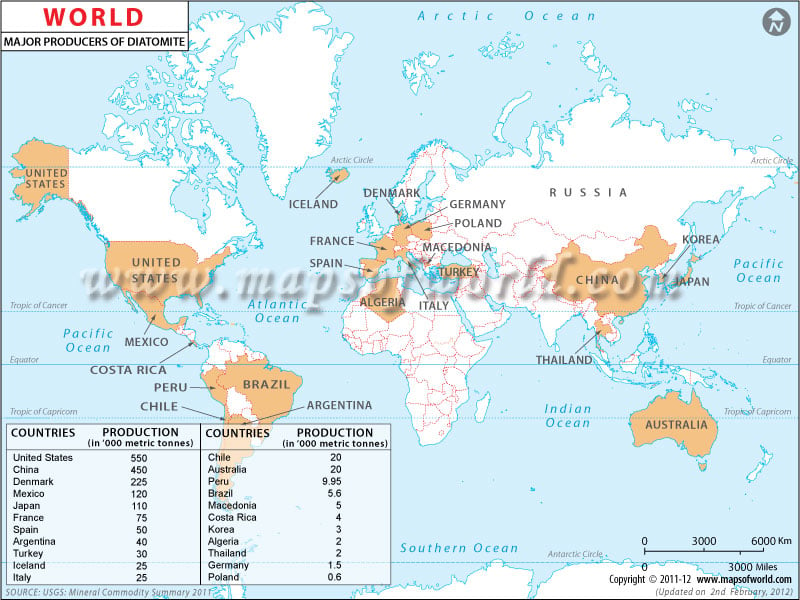Also known as kieselgur, Diatomite is a soft, sedimentary rock that is easily crumbled into a fine white powder. Consisting almost entirely of silica, diatomite occurs freely in nature.
As it is highly porous, diatomite is light in weight. It is used for a variety of purposes such as absorbent for liquids, as a matting agent for coatings, anti-block in plastic films, porous support for chemical catalysts, cat litter, activator in blood clotting studies, and a stabilizing component of dynamite.
Diatomite is highly resistant to heat and this property makes it a good thermal insulator. The Greeks first used diatomite over 2,000 years ago in pottery and brick. The World Map of Diatomite Producers shows a list of the countries that have some of the largest reserves of diatomite. As shown in the map, United States leads the world in the production of diatomite with an annual production of 5.5 million metric tonnes of the mineral.
The second-largest diatomite producer in the world is China producing around 4.5 million metric tonnes of diatomite. Denmark ranks third followed by the countries of Mexico, Japan, France, Spain, Argentina, Turkey, Iceland, and Italy.
Owing to its porous nature and high surface area, diatomite is used in the clean-up of spills in the automotive, industrial, janitorial and waste remediation industries. It is also used as a reinforcing filler in plastics and rubber.
MAJOR PRODUCERS OF DIATOMITE IN THE WORLD
| COUNTRY | PRODUCTION IN THOUSAND METRIC TONNES |
| United States | 550 |
| China | 450 |
| Denmark | 225 |
| Mexico | 120 |
| Japan | 110 |
| France | 75 |
| Spain | 50 |
| Argentina | 40 |
| Turkey | 30 |
| Iceland | 25 |
| Italy | 25 |
| Other countries | 50 |

